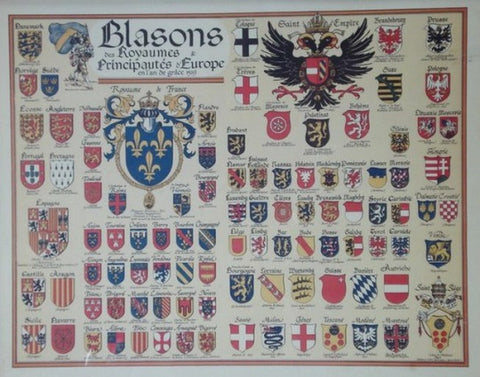National Arms, part 5

The seal of King Erik Knutsson ( 1208 – 16) presents heraldic decoration in the form of two crowned leopards facing each other, but are probably not intended as real heraldic charges; no arms are known for him or for his successor John Sverkersson, who was succeeded in 1222 by the six year old Erik Eriksson, the son of Erik Knutsson and of Rikissa, daughter of King Waldemar I of Denmark. He bore three crowned leopards in pale, the Arms of his mother’s family, yet they could not have been exclusively the Danish Royal Arms as he could not have used them if this were the case. He was succeeded by Knut the Tall who deposed him between 1229 and 1234. Knut was probably a member of the Erik Family and it is significant that his Coat of Arms, which are known from a tapestry, are entirely different; they are obviously family Arms used as State Arms.
 In 1250 the Folkunga dynasty came to power in the person of Waldemar, the son of Erik’s sister. He did not use the Arms of his family, but instead used the three leopards that had been borne by Erik. On his Seal he used two crowns but they are not armorial charges as they stand freely in the field of the seal, their purpose is to symbolize the king. The other members of this dynasty bore the family Arms which Magnus Ladula ( 1275-90 ) augmented by crowning the lion, a proof of the importance of the lion as a symbol of royalty. These Arms have come to be associated with Gotaland, the southern part of Sweden, yet it is clear from the motto on the shield Sigillum magni dei gracia Regis sweorum that the Folkunga Arms as State Arms represented the whole of Sweden
In 1250 the Folkunga dynasty came to power in the person of Waldemar, the son of Erik’s sister. He did not use the Arms of his family, but instead used the three leopards that had been borne by Erik. On his Seal he used two crowns but they are not armorial charges as they stand freely in the field of the seal, their purpose is to symbolize the king. The other members of this dynasty bore the family Arms which Magnus Ladula ( 1275-90 ) augmented by crowning the lion, a proof of the importance of the lion as a symbol of royalty. These Arms have come to be associated with Gotaland, the southern part of Sweden, yet it is clear from the motto on the shield Sigillum magni dei gracia Regis sweorum that the Folkunga Arms as State Arms represented the whole of Sweden.



